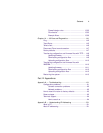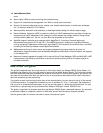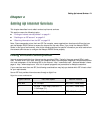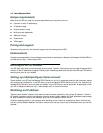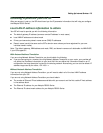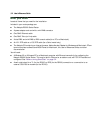
Introduction 1-1
CC
CC
hh
hh
aa
aa
pp
pp
tt
tt
ee
ee
rr
rr
11
11
II
II
nn
nn
tt
tt
rr
rr
oo
oo
dd
dd
uu
uu
cc
cc
tt
tt
ii
ii
oo
oo
nn
nn
OO
OO
vv
vv
ee
ee
rr
rr
vv
vv
ii
ii
ee
ee
ww
ww
The Netopia R5000 Series Router line consists of the R5100 Serial Router, the R5200 DDS Router, and the
R5300 T1 Router. Each is a full-featured, stand-alone, multiprotocol router for connecting diverse local area
networks (LANs) to the Internet and other remote networks.
Netopia's high-speed, leased line routers provide Internet service at 56K DDS, Fractional T1/E1, and T1/E1
speeds to give any branch, small-to-medium-sized office, or school a full-time presence on the Internet. With
built-in ease of use features, Netopia R5000 Series Routers provide an intuitive way to connect your network to
the Internet. As with all Netopia Routers, the leased line models come packaged as a complete solution,
including the necessary software, cables, and services to get you quickly connected to the Internet or corporate
Intranet.
Once your Netopia R5000 Series Router is connected to your computer, and your account is activated by your
frame and Internet service providers, you will have a clean, high-speed connection to the outside world.
This section covers the following topics:
■
“Features and capabilities” on page 1-1
■
“How to use this guide” on page 1-2
FF
FF
ee
ee
aa
aa
tt
tt
uu
uu
rr
rr
ee
ee
ss
ss
aa
aa
nn
nn
dd
dd
cc
cc
aa
aa
pp
pp
aa
aa
bb
bb
ii
ii
ll
ll
ii
ii
tt
tt
ii
ii
ee
ee
ss
ss
Netopia R5000 Series Routers provide the following features:
■
From 56K to 2.0 Mbps Serial, 56K DDS, and Fractional T1/T1 Models
■
Built-in 8-port Ethernet hub with uplink port to easily connect the router to workstations or other 10Base-T
hubs
■
Built-in basic firewall with IP or IPX packet filtering
■
Support for Frame Relay, PPP, and Cisco-HDLC encapsulation
■
SmartMatch automatic detection of Frame Relay parameters
■
Support for IP and IPX routing for Internet and intranet connectivity
■
IP address serving (over Ethernet or a WAN link) that allows local or remote network nodes to acquire an IP
address automatically and dynamically from a designated pool of available addresses
■
Continuous-availability networking, eliminating dialing and providing lower, more predictable transmission





